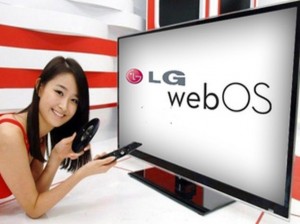 LG will bring the software that once powered Palm’s smartphones to the majority of its Internet-connected TVs this year, the company said Monday.
LG will bring the software that once powered Palm’s smartphones to the majority of its Internet-connected TVs this year, the company said Monday.
The South Korean firm unveiled webOS-based smart TVs at a trade fair in Las Vegas, less than a year after it bought the operating system for smartphones and tablet computers from Hewlett-Packard Co. LG Electronics Inc.’s chief technology officer, Skott Ahn, said the software will make LG TVs easier to set up and use. However, Ahn didn’t show any radical new capabilities not present on other TVs.
HP bought Palm Inc. in 2010 with a view to gaining a foothold in the world of smartphones, but it closed the division in late 2011 after disappointing sales. Last March, HP sold Palm’s crown jewel, the webOS software, to LG. LG is the world’s second-largest TV maker by shipments after Samsung Electronics Co.
Makers of television sets have been hoping to mimic the robust growth in the smartphone industry by introducing Internet-connected televisions that can run applications the way smartphones do.
More than 70 percent of LG’s new smart TVs this year will be based on webOS, which helps simplify searching contents and setting up the TV. LG also expects the new OS will make it easy for developers to write applications for its TVs. LG also aims to use webOS to increase communications between smart TVs and other devices.
Although LG did not say what other devices will become compatible with smart TVs, consumer electronics makers are envisioning households where consumers can easily control all kinds of home appliances and gadgets from one place.
At LG’s press conference at the International CES gadget show in Las Vegas, Netflix Inc. CEO Reed Hastings announced that the Internet video service will stream its “House of Cards” show in ultra-high definition “4k” resolution to LG webOS TVs this year. Netflix had earlier announced that it would stream the show in 4K to unspecified TVs.
Samsung is also seeking to make a television set that can serve as a center for controlling refrigerators, lighting and air-conditioning in a household, a concept that consumer electronics companies call “smart home.”
Source-NDTV








